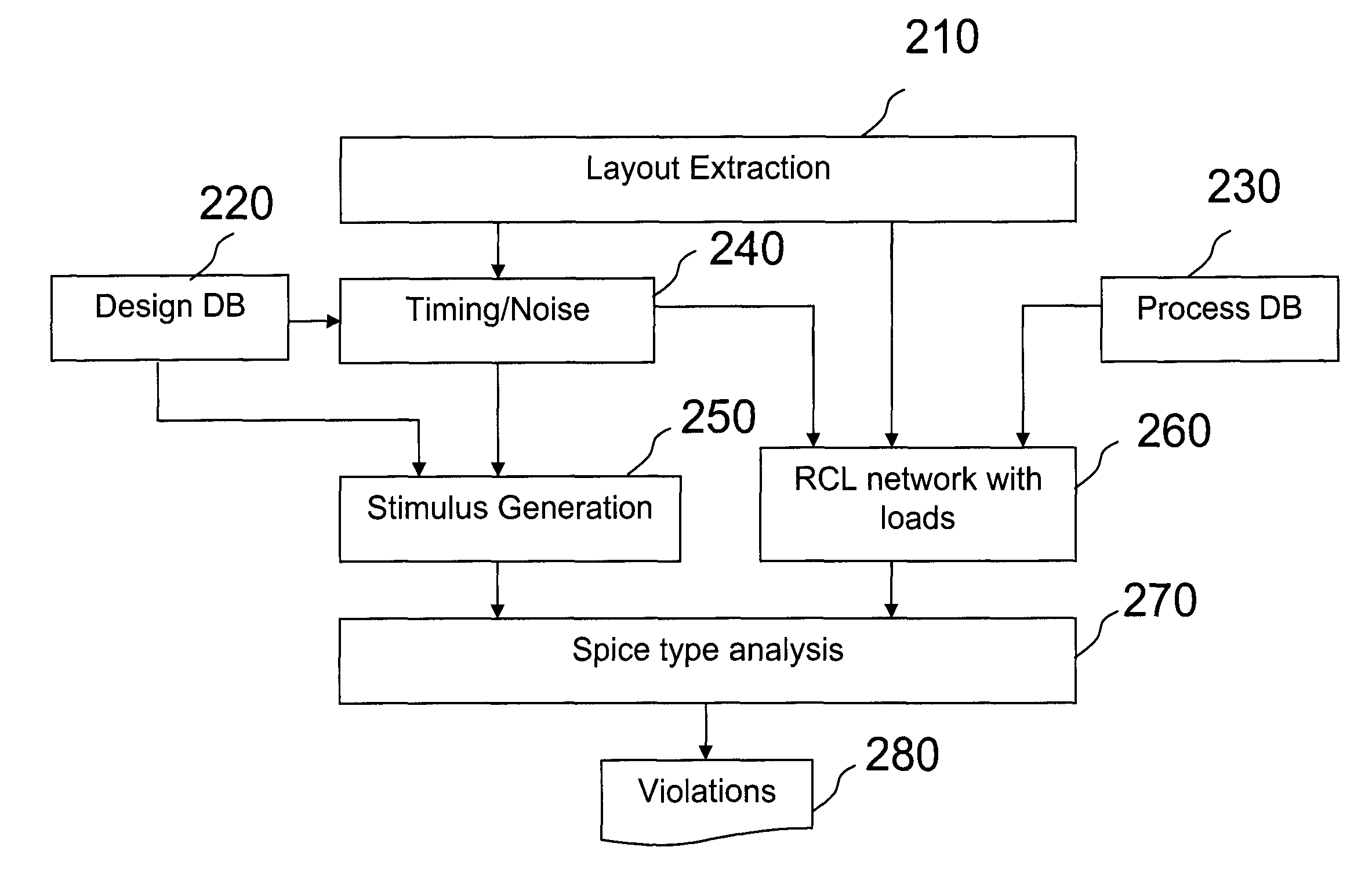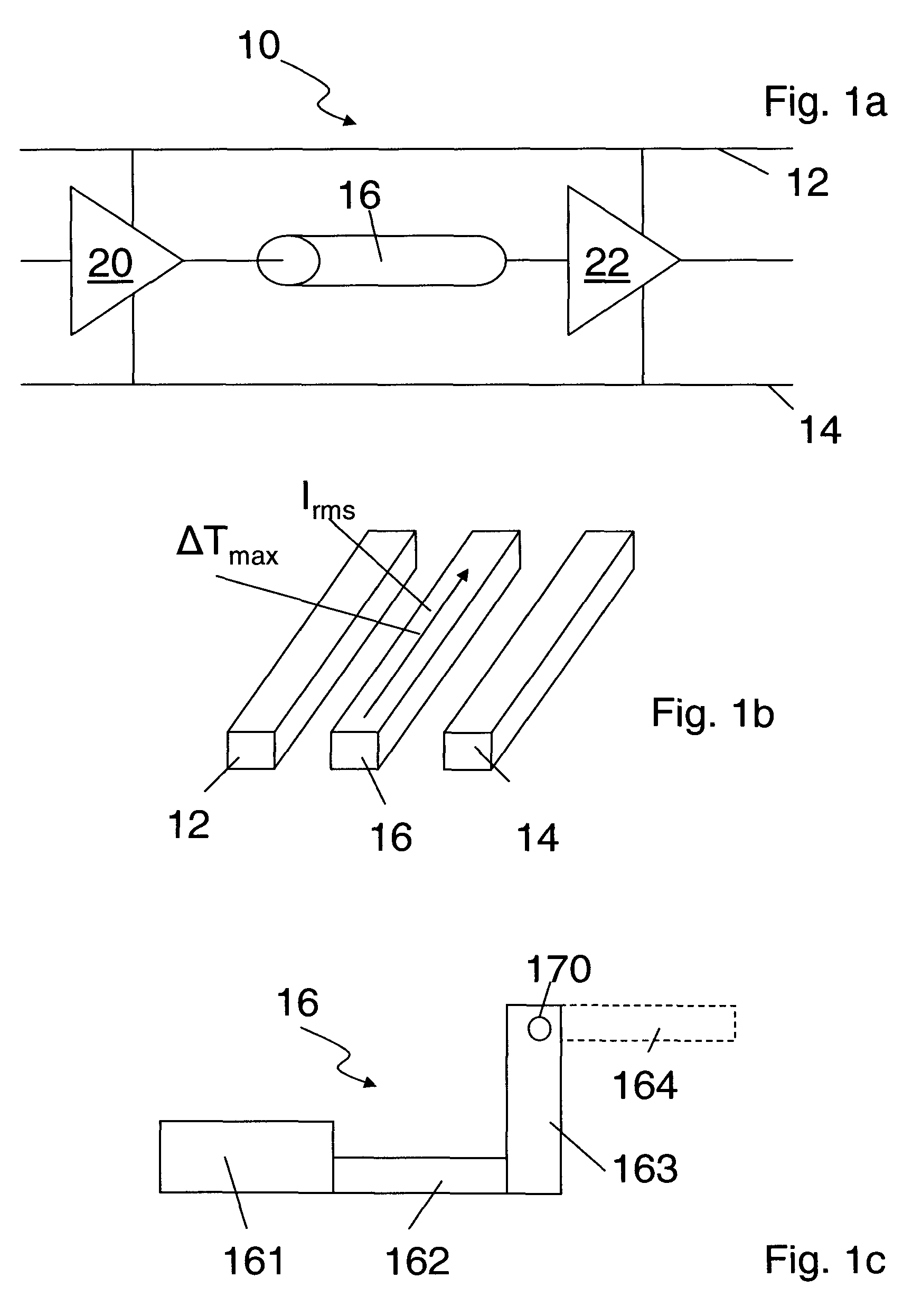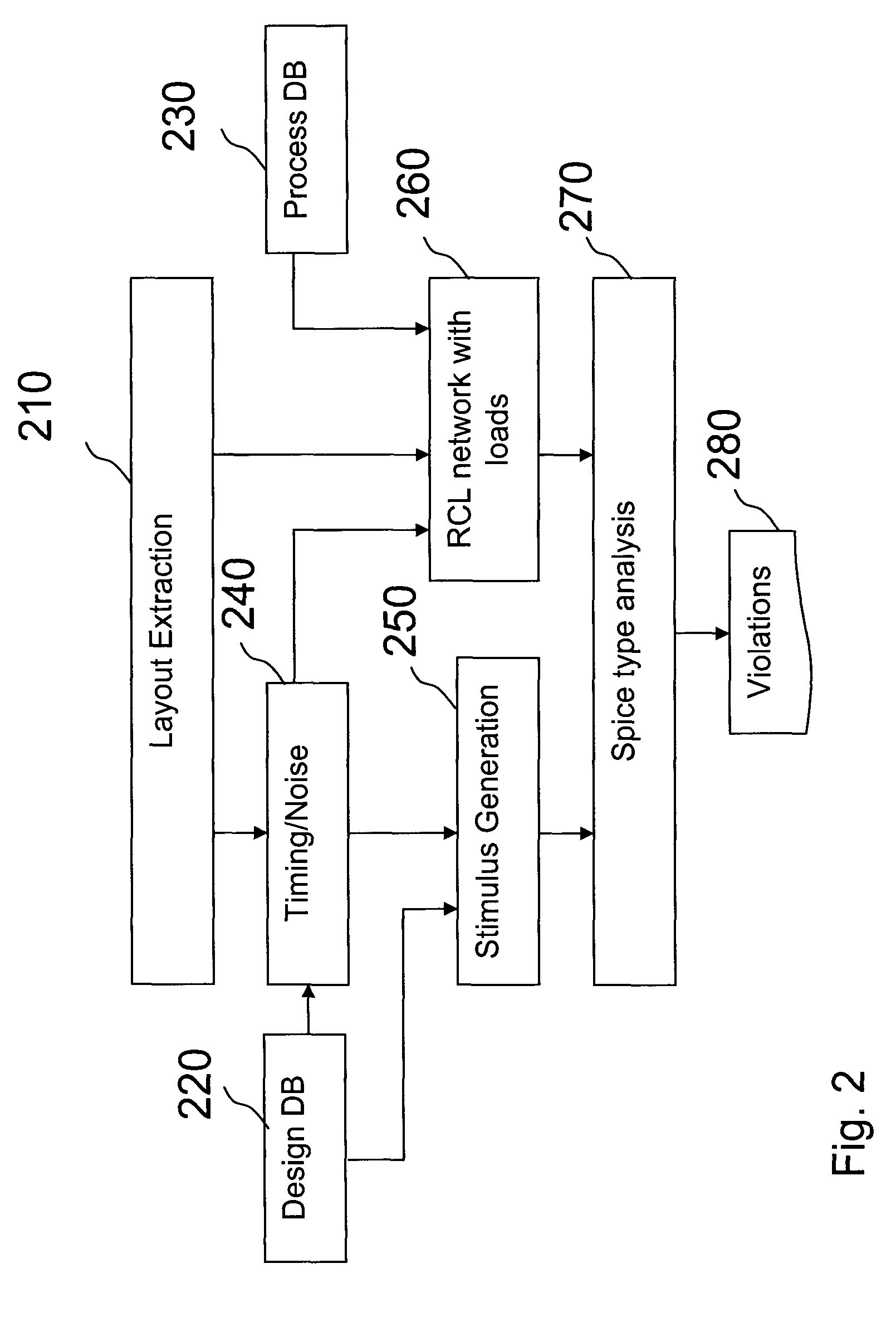Method and system for electromigration analysis on signal wiring
a signal wiring and electromigration analysis technology, applied in error detection/correction, program control, instruments, etc., can solve the problem of relatively pessimistic time parameters used in timing analysis, and achieve the effect of improving wiring quality
- Summary
- Abstract
- Description
- Claims
- Application Information
AI Technical Summary
Benefits of technology
Problems solved by technology
Method used
Image
Examples
Embodiment Construction
[0040]The drawings are merely schematic representations, not intended to portray specific parameters of the invention. Moreover, the drawings are intended to depict only typical embodiments of the invention and therefore should not be considered as limiting the scope of the invention. In the drawings, like elements are referred to with equal reference numerals.
[0041]Generally, the present invention provides a method analyzing probable local failures of wire segments and vias due to electromigration. As the analysis maintains topological information throughout the analysis adjustment of the layout and / or wiring is facilitated and reduced to the areas where adjustment is needed. Local failures can directly be flagged by comparison of readout of the analysis and against annotated maximum limits of effective current and peak current densities.
[0042]Designing a chip with integrated electronic circuits starts out from a netlist which comprises a description of the cells and their intercon...
PUM
 Login to View More
Login to View More Abstract
Description
Claims
Application Information
 Login to View More
Login to View More - R&D
- Intellectual Property
- Life Sciences
- Materials
- Tech Scout
- Unparalleled Data Quality
- Higher Quality Content
- 60% Fewer Hallucinations
Browse by: Latest US Patents, China's latest patents, Technical Efficacy Thesaurus, Application Domain, Technology Topic, Popular Technical Reports.
© 2025 PatSnap. All rights reserved.Legal|Privacy policy|Modern Slavery Act Transparency Statement|Sitemap|About US| Contact US: help@patsnap.com



